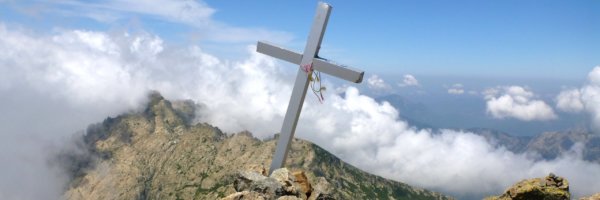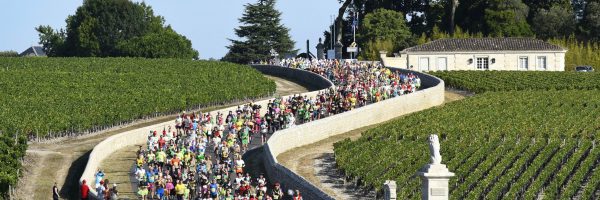Thinking about doing the infamous GR20, one of Europe’s toughest treks? You need to read this first.
Setting off on the GR20 is tough from the first step. The dizzying ascents of the north section start in the fragrant scrubland before climbing up, way beyond the treeline, which had protected you from the elements. Thick snow in winter makes the GR20 impassable except by highly experienced skiers, and in summer the brutal Mediterranean sun beats down, bleaching everything it hits to a dusty green or grey.
With a total elevation variation of over 12,000m, walking the GR20, a route of 180k throughout Corsica’s rugged granite peaks, is no easy feat. The trail, often dubbed ‘Europe’s toughest trek’, includes some pretty technical climbs over loose rocky surfaces and exposed narrow ridges. It also offers hikers some of the most rewarding views over the stunning Mediterranean landscape.
You can dismiss ideas of staying in charming country hotels: up here, a pallet bed in a mountain hut with up to fifty other sweaty hikers is the luxurious option. Others, after a long day on a trail littered with sharp stones and granite boulders, choose to pitch their tent on a patch of land that typically isn’t much better.
Three thru-hikers spoke to Siena Morell about their experiences on the trail. Fresh out of university, Hamish, Harvey, and Marcus completed the GR20 in just thirteen days last summer, and with only a modest amount of hiking experience under their belts.
How did you prepare for the mental and physical challenge of the GR20?
Marcus: I didn’t really prepare that much. I watched a video with some older men doing the trail and assumed ‘How hard can it be?!’ How wrong I was.
Hamish: Probably not well enough. A lot of the advice online is to do a fair amount of training, which we probably didn’t follow well enough. I’d definitely recommend a bit of hill training with your full pack on, and maybe even some rock climbing.
Harvey: Apart from going on the odd run, which I do usually, I didn’t do any particular training like running up hills with weighted backpacks, scrambling practice, etc. As for the mental challenge? There is no real way that you can train for that. You know it’s going to be hard but you can’t do anything about it.
Hiking the GR20: everything you need to know
Was there a ‘typical day’ while you were trekking? What did it look like?
Hamish: Most days we’d wake up at 5am for porridge, which we’d prepped at home and bagged for each day — cinnamon and dried cranberries were a special treat. Then we’d set off at 6am and walk until lunch.
Harvey: In the morning we’d tend to climb for a few hours, walk along a ridge, and then descend for the last part of the day.
Hamish: Sometimes we’d finished the stage by then, which would be good because walking in the heat was not ideal. We’d lunch on local dried wild pig, and goats cheese, then spend the afternoons chilling and mingling with the other hikers from all over Europe.
What pieces of kit proved essential on your trek?
Marcus: A good-quality tent is an absolute must. Even though the weight might be a little more, try and get a tent with a size rating above your actual size: it means you can have ‘admin space’ which is really useful.
Hamish: A spork. Essential for eating, or, as in Marcus’s case, essential for fixing his backpack.
Harvey: I couldn’t have lived without my Alpkit dry bags. Obviously, their main purpose is to save things from getting wet, which was no problem for us, but also they’re very useful just for organizing things in your bag. If you know exactly what is inside each bag, then it saves you emptying out your backpack every night to find one little thing.
What was the most challenging part of the trip?
Marcus: The worst bit for us all was either the first day, or about ten days in when we tripled up the distance and had a really long last leg.
Hamish: The fourth day is famed for being the toughest: five hours of pure climbing. I think the lowest point was day nine, when we walked nearly 40km in intense heat. All members were short on water, and the guidebook’s questionable advice resulted in extreme profanities towards the poor author.
Harvey: The most challenging part for me was the first day, without a doubt. My backpack was heavy, and I simply wasn’t ready for what came. Our guidebook described Day One as a ‘baptism of fire’, and it certainly lived up to that description.
Which trail segment was your favourite?
Hamish: Definitely Day Six! An awesome mix of climbing and walking through Alpine lakes, with cows and their bells!
Harvey: The segment I enjoyed the most was the walk from Carrozzu to Asco Stagnu. It wasn’t particularly long, just a lot of climbing and descending, but we all enjoyed arriving at the refuge before midday. The walk itself was lovely, with great views all around, especially form the peak facing southwards.
Camping rucksacks: 6 of the best
Marcus: I don’t think I could pick a favourite, they all had absolutely stunning views. I was lucky enough to celebrate my birthday during the trip, though, so I signed the Visitors’ Book on the summit of the highest mountain on the 18 of August, which had to be one of the best bits. That evening was pretty epic too: we shared an alcohol-infused sing-along with some Italians.
Harvey: Also, weather-wise, we were unbelievably lucky. We met a German man on the third day who had said he had only one hour of rain on his whole trek. We remembered thinking then how lucky he was! But we didn’t get a drop of rain the entire 13 days. Corsica is known to have pretty unpredictable weather with frequent thunderstorms followed by perfect blue skies, but fortunately, we didn’t experience any of that.
Had you done much hiking before? Have you caught the hiking bug from your trip?
Marcus: I had done a small amount, but nothing so long in both distance and time. Definitely caught the bug!
Hamish: I’d done a fair bit, but this has definitely given me the motivation to go and take on other long-distance treks or cycle rides!
Harvey: I hadn’t done too much before, to be honest. I had done the West Highland Way in Scotland, and a three-week-long trek across Costa Rica five years ago. Apart from that, not much. I loved hiking before, and after doing the GR20, I love it even more now! I’m looking at the next trek we could take on: potentially the Camino de Santiago in northern Spain.
What do you wish you had known before you started? What advice would you give to those considering the challenge?
Marcus: Start from the North. If you choose a south-north route, you’ll be too tired to enjoy the higher climbs later on. Also, give yourself some time to relax on the beaches at the end, they’re stunning!
Hamish: Don’t underestimate it! With a little bit of training, you can enjoy it even more.
Harvey: Take the absolute minimum. A lot of people we met didn’t carry tents, just slept under the stars every night to save weight. I would also recommend walking poles, too. I thought they’d be really irritating but I wish I had taken some. Finally, definitely bring a Camelback and canteens to fill about four litres of water each day. It might be heavy, but it’s worth it: we ran out of water on a couple of days when there were no sources.
Hamish: I would also recommend taking a couple of days after your trek to explore Corsica, it’s underrated! Not built-up at all, and the beaches are just pristine.
Check out our Hard as Nails podcast:
Like this? We also think you’ll love these:










